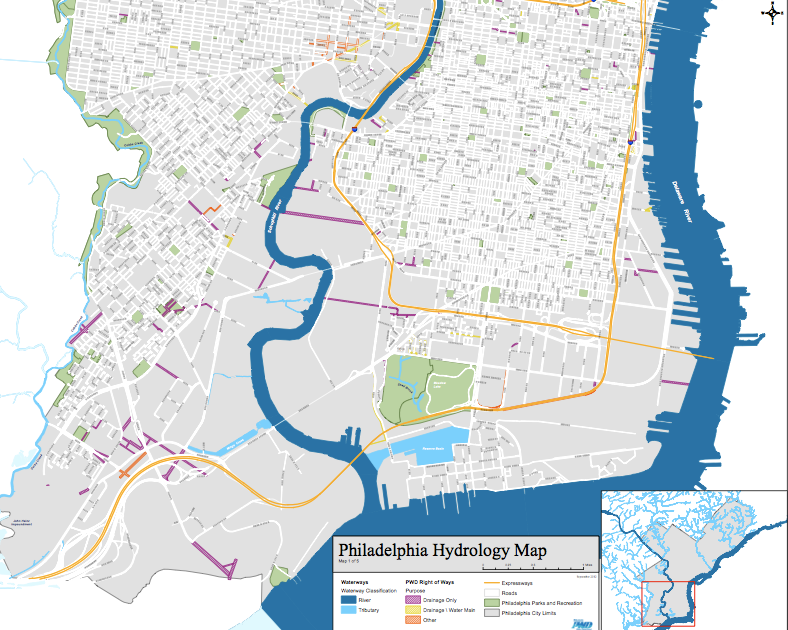CDAG, other stream buffer advocates concerned about proposed amendments to 50-foot setback legislation

The Central Delaware Advocacy Group and other concerned groups hope to convince Philadelphia Councilman Bobby Henon to change his proposed amendments to stream buffer legislation.
Several CDAG members have been representing the organization at council hearings and in discussions with city entities and other parties interested in the stream buffer legislation, including the Pennsylvania Environmental Council and Schuylkill Banks. The latter is encouraging people to testify in support of the original legislation and against the amendments at Wednesday’s council Rules Committee hearing.
CDAG Chairman Matt Ruben reported back to the group at a recent meeting that one Henon amendment would reduce the 50-foot development setback on the Schuylkill and Delaware rivers at a significant amount of properties.
Under the original setback legislation, no permanent structure or impervious surface could be placed closer than 50 feet to the water, unless related to a port, marina or some other use that must touch the water in order to function.
But under Henon’s proposal, owners of a property that currently has an existing structure less than 50 feet from the waterline would be allowed to expand up to that closer distance.
Henon has described the intent of his legislation as creating a smaller buffer on these parcels with pre-existing structures. where property owners could expand, parallel to the river bank, no closer to the water than they already are.
“If you have one building and the corner is 30 feet (from the river) instead of 50, you could build to 30 feet the entire width of your property,” Ruben said.
Those who oppose or want to change the stream buffer legislation worry that its current wording could impede industrial growth.
Allowing expansion to the furthest point of a non-conforming structure would allow a significant amount of development within the proposed 50-foot buffer – a setback proponents say would provide both environmental protections for the rivers and a place for public trails and other river access – particularly along the Schuylkill and Delaware. A city water department analysis has shown that 29 percent of all waterfront properties in the city have buildings within 50 feet of the water, and on the Schuylkill and Delaware rivers, that number jumps to between 40 and 50 percent.
Ruben and CDAG member Joe Schiavo, who has also been part of the talks, said that as of late last week, Henon’s office seemed willing to consider a compromise, limiting expansion on such properties to 10 percent. It was unclear, Schiavo said in response to a question from CDAG member Mary Stumpf, whether this meant a 10 percent increase in the size of the building that is out of compliance, or if expansion could occur on up to 10 percent of the property. But either way, this would be a significant reduction to what would be allowed under the wording of the current amendment, Ruben said.
Ruben noted that without changing the original legislation, property owners can still expand buildings in any direction that doesn’t take them closer than 50 feet to the water – including up.
CDAG and other setback proponents are also worried about wording that would allow distribution and storage facilities as a use within the setback. “This means we could have self-storage facilities for an indefinite period of time,” Schiavo said. During a conference call, advocates decided to recommend that these facilities not be an allowable, primary use.
“To be clear, if you have a port or industrial use, and you have storage for that, that’s ok,” Ruben added.
Another Henon amendment would change the body that grants special exceptions for uses prohibited within the setback. The property owner or developer would go to the ZBA instead of the PCPC. This isn’t necessarily a bad thing, Schiavo said, because ZBA decisions can be appealed through the courts, while PCPC decisions cannot be appealed.
But Ruben questioned why this difference would only be in place for special exceptions within the setback. If the concern is about impeding industrial development, why not change the procedure for all industrial properties?
Ruben said in his opinion, it’s because developers who support the amendment are really thinking more about residential and commercial development than industrial development. “They want to develop residential and commercial as close to the water as they can, and as private as can. That’s my personal opinion,” he said.
Schiavo said that the amending of this legislation has brought up another issue, related to any amendment to the zoning code: Now that the Zoning Code Commission, which wrote the new code, has been dismantled, there is no mechanism in place to inform interested parties when a change to the code has been proposed.
This is why the group of stakeholders working together on the stream buffer issue is also proposing the creation of such a mechanism. “There should be an announcement to known stakeholders, and some forum for discussion and input prior to (a proposed zoning code change) hitting city council’s chambers,” he said.
Reach the reporter at kgates@planphilly.com.
WHYY is your source for fact-based, in-depth journalism and information. As a nonprofit organization, we rely on financial support from readers like you. Please give today.



